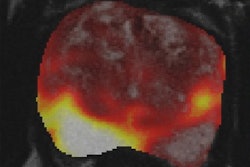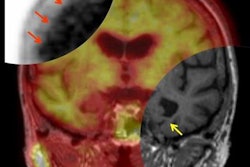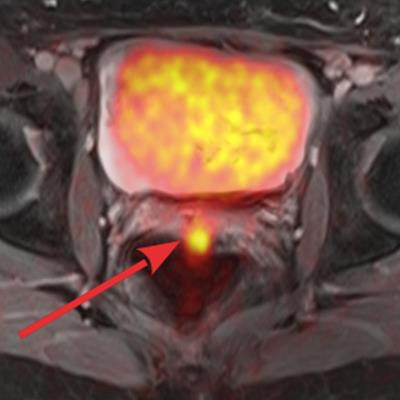
Young and aspiring radiologists and nuclear medicine clinicians are seeking more training and educational opportunities to advance their knowledge of hybrid imaging, which could lead to certification in the field, according to the results of a largely European survey published online on 26 April in Cancer Research.
Approximately two-thirds of the radiologists who responded said there were too few hybrid imaging experts in their country. One way to solve that deficiency, they recommended, is better coordination between the radiology associations across borders to support hybrid imaging education.
"Higher fences don't make better neighbors," said lead author Thomas Beyer, PhD, professor of physics of medical imaging and deputy head of the Center for Medical Physics and Biomedical Engineering at the Medical University of Vienna. "Hybrid imaging is the hardware combination of complementary imaging techniques put to traction for the benefit of patients. Just like complementary hardware works together, we should support the same on a human specialist's level. We need to talk to each other more while respecting existing differences between nuclear medicine and radiology."
Hybrid history
Hybrid imaging has been part of radiology's regimen for the past two decades, and has since become a critical tool for the diagnoses of various diseases and abnormalities, as well as monitoring patients' conditions. PET has been the cornerstone for this technological advance through its pairing with CT, MRI, and SPECT for the betterment of both general radiology and nuclear medicine. Many observers, however, allege that education and training has not kept pace.
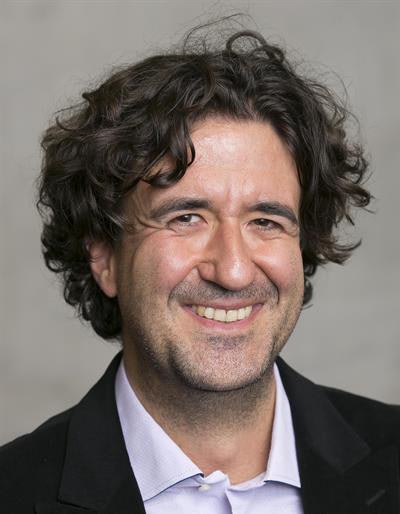 Thomas Beyer, PhD, from Medical University Vienna.
Thomas Beyer, PhD, from Medical University Vienna."Similar advances in expert interaction are not being made at equal pace," Beyer wrote in an email to AuntMinnieEurope.com. "We still see that collaboration between radiology and nuclear medicine is difficult in several settings: locally, nationally, and internationally. We also notice that standardization of hybrid imaging examinations can and should be improved."
This disparity is the main reason why Beyer and colleagues sought the viewpoints of young clinicians embarking on careers that likely will see the continued utilization, and likely expansion, of hybrid imaging in daily, routine imaging.
"Considering the disharmonious compassion about technical and clinical integration of hybrid imaging, and bearing in mind that base training in hybrid imaging is essential to keep these modalities sustainable in clinical workflows, we were interested in probing the state-of-the-art of hybrid imaging training affairs worldwide," added study co-author Dr. Lutz Freudenberg from the Rhineland Center of Radiology in Korschenbroich, Germany. "As part of this survey we also probed the attitude of people who are engaged in training -- as trainers and trainees -- toward the collaboration between radiology and nuclear medicine on a local, national, and international level."
The researchers launched the online survey in October 2016 for participants of the Asklepios European School of Radiology (ESOR) and European Society for Hybrid Medical Imaging (ESHI) courses on hybrid imaging. The query was available for two weeks and included 17 multiple choice and open questions. It asked respondents to detail their professional background and thoughts on hybrid imaging training and education efforts. The study included a total of 248 responses that were returned (Cancer Research, 26 April 2018).
Respondents had a mean age of 41 years (± 11 years). The majority (36%) of replies came from those between 20 and 35 years old, which was the target for the survey, while 4% of the respondents were older than 65 years. Most of the responders were male (65%).
The bulk of the questionnaires (197 returns, 78%) were collected from Europe, followed by Africa (6%), Asia (6%), the Middle East (4%), North Americas (4%), and South America (2%). Half of the responders work in radiology departments (51%), while 25% work in nuclear medicine, 17% in joint radiology and nuclear medicine departments, and 7% in other institutions.
Approximately one-third of the responders had no experience with hybrid imaging, while 22% said they had as many as fours years of experience with hybrid imaging and 22% indicated more than 10 years of experience.
Lack of expertise
One item on which there was considerable agreement (72%) is that there are too few hybrid imaging experts available in the respondents' country, compared with 16% saying the supply was adequate and only 1% adding there were too many.
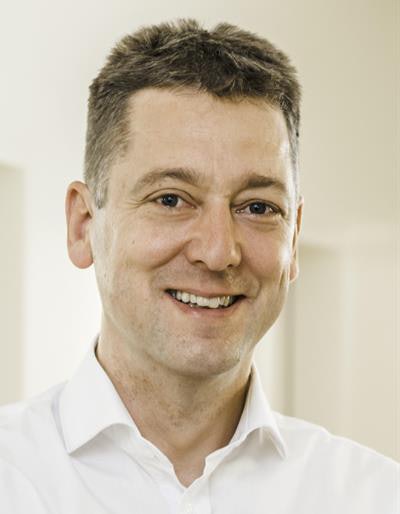 Dr. Lutz Freudenberg from the Rhineland Center of Radiology.
Dr. Lutz Freudenberg from the Rhineland Center of Radiology.The 72% figure was not a surprise to the authors, who attributed the result to a fairly high number of responses coming from countries that only recently adopted hybrid imaging, particularly PET/CT, on a wider scale.
"Furthermore, different professional approaches toward hybrid imaging training may contribute to the perception of too few experts being around," Freudenberg wrote. "Overall, only few physicians perceive themselves as true hybrid imaging physicians, which is related to a lack of a clear definition of a hybrid imaging expert and the lack of internationally recognized certificates."
Coincidentally, approximately 75% of the respondents support education and training so a clinician could become a hybrid imaging expert. In addition, approximately 90% favor a joint curriculum that would mirror a white paper by the European Society of Radiology (ESR) and the European Association of Nuclear Medicine (EANM).
(Among other recommendations, the white paper concluded that "training in nuclear medicine and diagnostic radiology should provide the option for multimodality imaging" [European Journal of Nuclear Medicine and Molecular Imaging, April 2008, Vol. 35:3, pp. 677-680].)
"Both lead associations should reinvest in respectful communication and find ways to address the request by the next generation of physicians: to prepare them for hybrid imaging," added Beyer, who is also the ESHI president.
The majority of survey respondents without a board certification said they regularly review scientific literature (63%) and attend conferences (48%) to advance their education, while 27% expressed an interest in webinars. While webinars may be more convenient than traveling to a conference, the online option also has its challenges.
"Intense personalized training onsite requires time and money," Beyer said. "In general, we think the willingness to invest in training is less sincere than to invest in hardware, presumably because allocated budgets are different locally and training offered by vendors during the process of a sale of a hybrid imaging system can be at times expensive."
Mutual benefits
Still, most respondents concurred radiologists and nuclear medicine specialists can learn from each other as hybrid imaging continues to proliferate. A majority (62%) said anatomy is one area nuclear medicine can learn from radiology, as well as increased competence in CT (11%), MRI (12%), and overall radiological imaging (7%).
Approximately half (49%) acknowledged that radiologists could benefit from metabolic imaging education from nuclear medicine, followed by function, physiology, and pathophysiology (27%), radiopharmacy (17%), and comprehensive nuclear medicine imaging (7%).
Given estimates that as much as 85% of PET/CT scans alone are performed for oncologic indications, the oncology community may well be in the best position to promote hybrid imaging education and hands-on training.
"Clearly, it would be worth knowing the full breadth of the expectations of oncologists toward hybrid imaging," Beyer said. "We know that these expectations relate to a high accuracy, low costs, and quick availability."
However, there are other expectations, such as the structure and coding of the optimal hybrid imaging report.
"The oncology community is likely to buy into the idea of hybrid imaging if their clinical questions can be addressed through a patient-specific examination and imaging protocol," Freudenberg added. "Perhaps equally important is if standardized reporting is used to help to standardize the communication between oncologist and imager."
The researchers are not finished yet in exploring elements of hybrid imaging and its uses. They already have prepared a survey on the procedure and variants of reporting clinical PET/CT studies. It is accessible in English here. The survey closes in four weeks.







